Fashion has always been a way to express oneself, revealing personality, social status, and cultural identity. Looking into history, we see how figures used clothing to make a bold fashion statement. Their choices had a lasting impact on style, shaping relevant trends. Exploring 10 Historical Figures Dresses reveals how icons used fashion to influence trends and make bold statements through time.
Across different eras, 10 legendary figures stood out with their iconic outfits, each reflecting power, elegance, or rebellion. From royals in luxurious fabrics to revolutionaries with distinctive attire, their statements were more than just fashion; they defined moments in time. If you want to dress like someone who left a mark on history, embracing their fashion statement will allow you to channel their authenticity.
Recreating these timeless outfits for special occasions can transport you to another era. A well-selected costume offers a chance to experience the essence of historical fashion firsthand. Whether it’s a Victorian gown with exquisite detail or a sharply tailored military uniform, each outfit adds a touch of flair to your look.
If you’re searching for an outfit that will truly turn heads, draw from those who shaped the world with their sense of style. Fashion is more than just aesthetics, it’s storytelling, a way to wear history with pride and confidence.
Marie Antoinette’s Rococo Gown

The extravagant Rococo gown worn by Marie Antoinette defined 18th-century fashion with its luxurious fabrics, intricate embroidery, and voluminous skirts. Often adorned with lace, pearls, and pastel hues, this outfit represented royalty, elegance, and opulence. It remains a timeless inspiration for those seeking a historical, regal look.
Where to Use
- Themed parties
- Masquerade balls
- Period drama events
Where Not to Use
- Casual gatherings
- Outdoor festivals
Pros and Cons of Marie Antoinette’s Rococo Gown
Pros:
- Visually stunning and elegant
- Perfect for grand events
- Rich historical significance
Cons:
- Bulky and difficult to move in
- Expensive to replicate
Napoleon Bonaparte’s Military Uniform
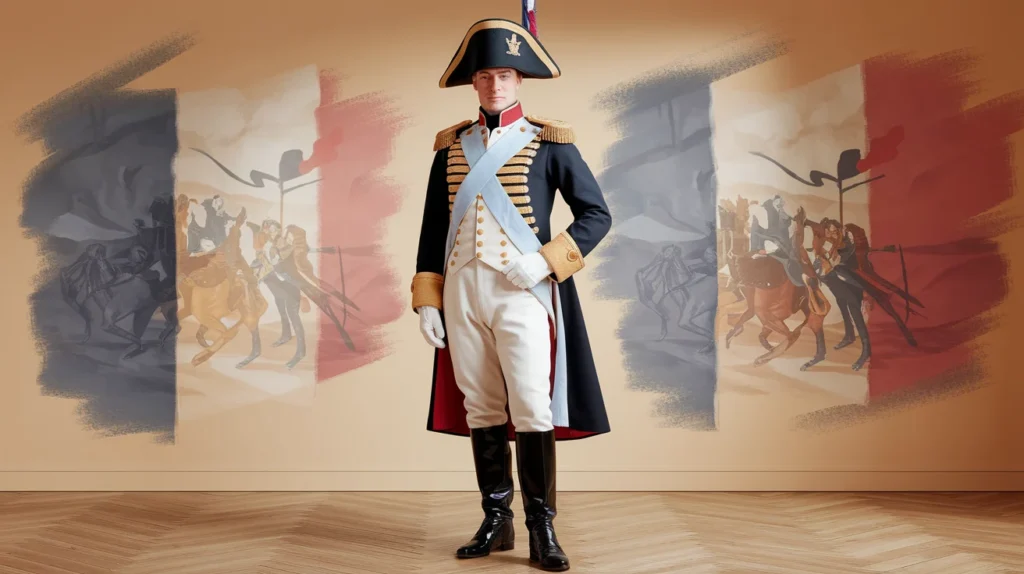
The military uniform of Napoleon Bonaparte featured gold-trimmed coats, epaulettes, and bicorne hats, symbolizing authority and strategy. It remains an iconic look for those wishing to embody power and leadership.
Where to Use
- Historical reenactments
- Costume parties
Where Not to Use
- Formal corporate events
- Casual settings
Pros and Cons of Napoleon Bonaparte’s Military Uniform
Pros:
- Commands attention and respect
- Classic and recognizable
Cons:
- Heavy and warm to wear
- Not versatile for different occasions
Cleopatra’s Egyptian Ensemble
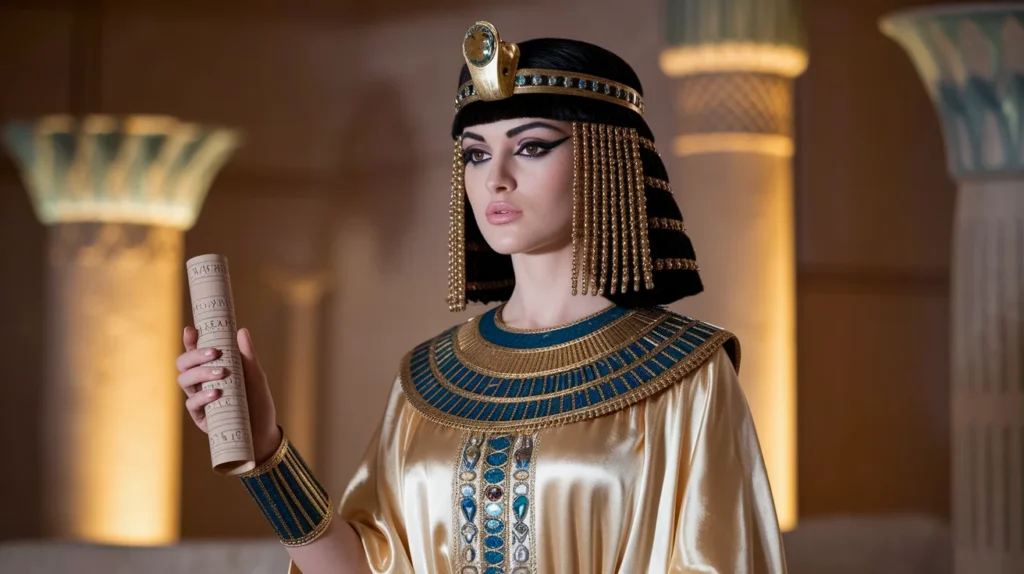
Cleopatra’s Egyptian attire was a perfect blend of royalty and mystique. Her iconic draped dresses, golden accessories, and intricate headpieces symbolized power, intelligence, and divine status. Made from fine linen and decorated with gemstones, her look remains a timeless inspiration for those wanting to exude grace and command attention.
Where to Use
- Egyptian-themed events
- Halloween and costume parties
- Theater performances
Where Not to Use
- Business meetings
- Casual social gatherings
Pros and Cons of Cleopatra’s Egyptian Ensemble
Pros:
- Elegant and historically rich
- Easy to accessorize
- Lightweight and comfortable
Cons:
- Requires specific makeup and styling
- Not suitable for formal settings
Queen Elizabeth I’s Tudor Gown
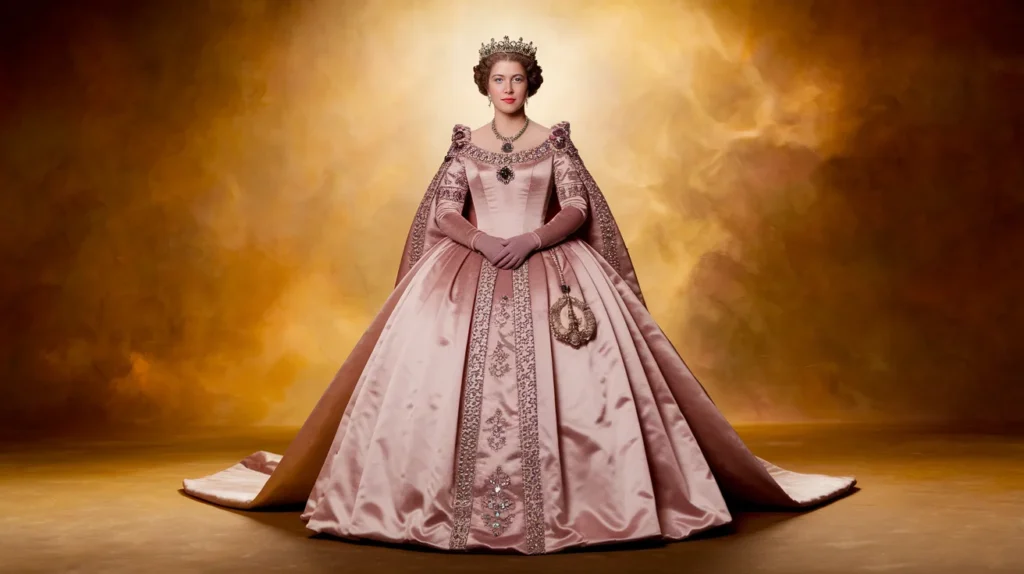
The Tudor gown of Queen Elizabeth I was a statement of royalty, power, and sophistication. These gowns were made from brocade, velvet, and silk, featuring ruff collars, puffed sleeves, and elaborate embroidery. This look is ideal for those who appreciate historic elegance and grandeur.
Where to Use
- Renaissance fairs
- Royal-themed events
- Masquerade balls
Where Not to Use
- Modern formal events
- Warm outdoor settings
Pros and Cons of Queen Elizabeth I’s Tudor Gown
Pros:
- Regal and majestic appearance
- Rich in historical detail
- Great for costume competitions
Cons:
- Heavy and hard to move around in
- Expensive materials required
Joan of Arc’s Armor
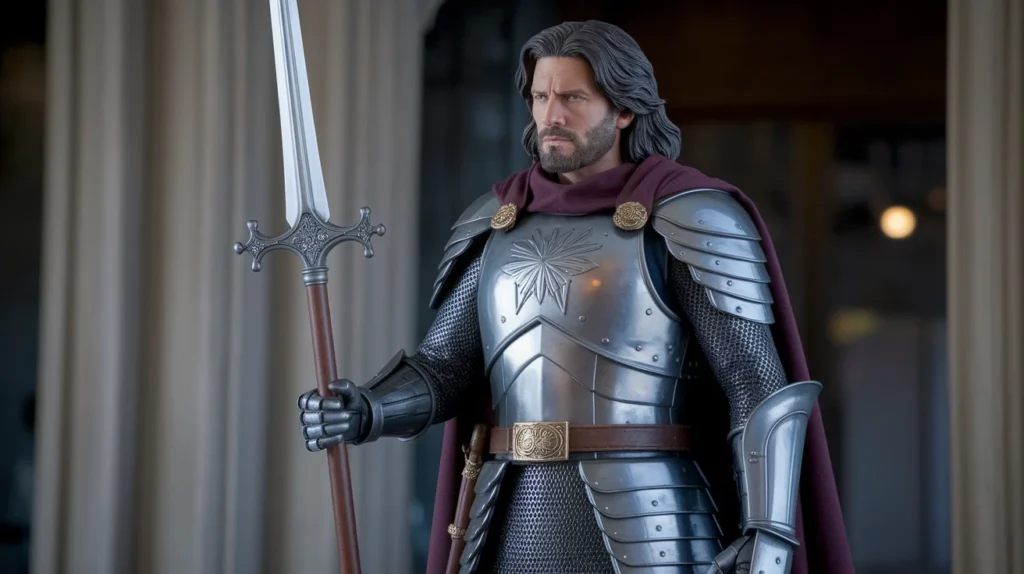
Joan of Arc’s armor was a symbol of strength, courage, and defiance. The chainmail and plated steel design reflected her warrior spirit and determination. Wearing this outfit brings a powerful, heroic presence that resonates with many.
Where to Use
- Medieval reenactments
- Fantasy-themed events
- Theater performances
Where Not to Use
- Casual parties
- Everyday fashion
Pros and Cons of Joan of Arc’s Armor
Pros:
- Powerful and inspiring look
- Perfect for historical enthusiasts
Cons:
- Very heavy and uncomfortable
- Limited mobility
Audrey Hepburn’s Little Black Dress
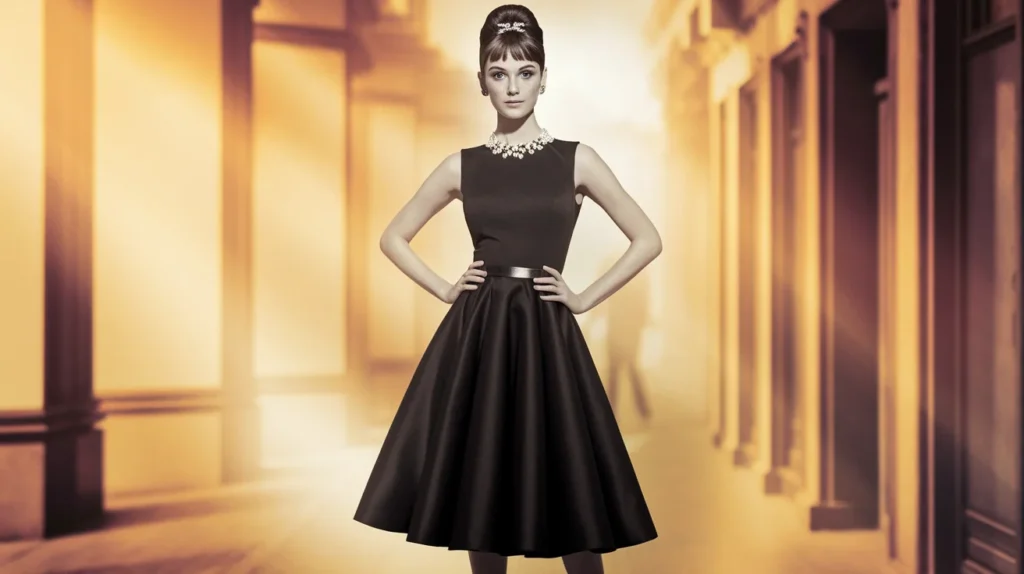
Made famous in Breakfast at Tiffany’s, Audrey Hepburn’s Little Black Dress (LBD) is a timeless piece of class and sophistication. With its sleek silhouette and minimalistic charm, it remains a go-to for effortless elegance.
Where to Use
- Formal dinners
- Cocktail parties
- Red carpet events
Where Not to Use
- Historical reenactments
- Casual outdoor events
Pros and Cons of Audrey Hepburn’s Little Black Dress
Pros:
- Timeless and versatile
- Elegant yet simple
- Suitable for multiple occasions
Cons:
- Less extravagant for costume events
- Minimal accessories may feel plain
Coco Chanel’s 1920s Flapper Dress
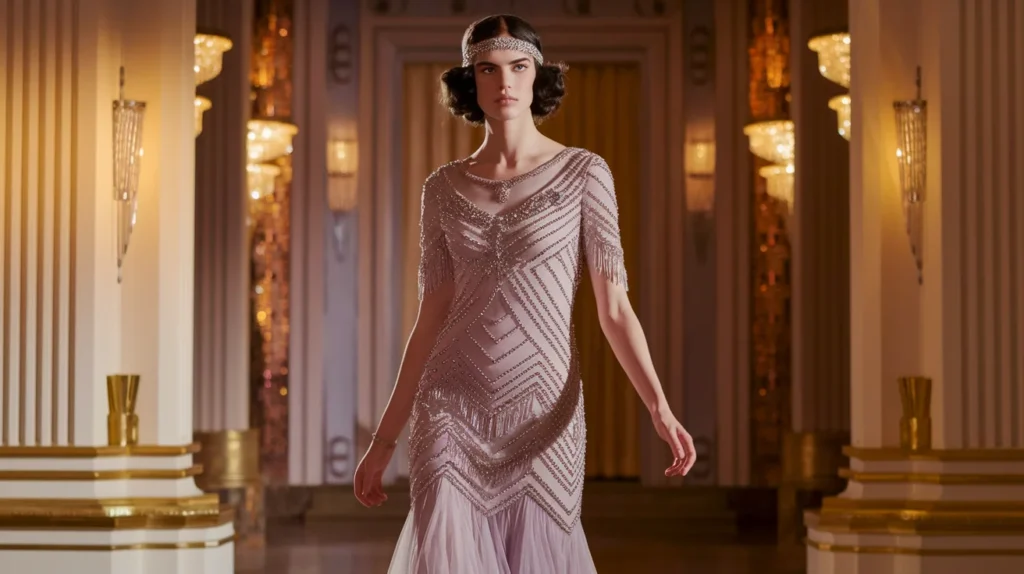
The 1920s Flapper Dress, made popular by Coco Chanel, revolutionized women’s fashion with its loose fit, fringe details, and bold embellishments. It represents freedom, rebellion, and glamour.
Where to Use
- 1920s-themed parties
- Jazz and Gatsby events
- Costume galas
Where Not to Use
- Strictly formal occasions
- Workplace settings
Pros and Cons of Coco Chanel’s 1920s Flapper Dress
Pros:
- Fun and stylish
- Easy to dance in
- Embodying an era of change
Cons:
- It may not be suitable for all body types
- Delicate fringe may require care
Mahatma Gandhi’s Simple Dhoti

Mahatma Gandhi’s dhoti symbolized simplicity, self-reliance, and resistance. This unstitched cotton cloth was a bold statement against colonial rule and an emblem of humility and strength.
Where to Use
- Cultural and historical events
- Educational reenactments
Where Not to Use
- Formal business settings
- Cold climates
Pros and Cons of Mahatma Gandhi’s Dhoti
Pros:
- Represents a strong historical message
- Comfortable and lightweight
Cons:
- Too simple for elaborate occasions
- Not widely recognized as a fashion statement
Frida Kahlo’s Traditional Mexican Tehuana Dress
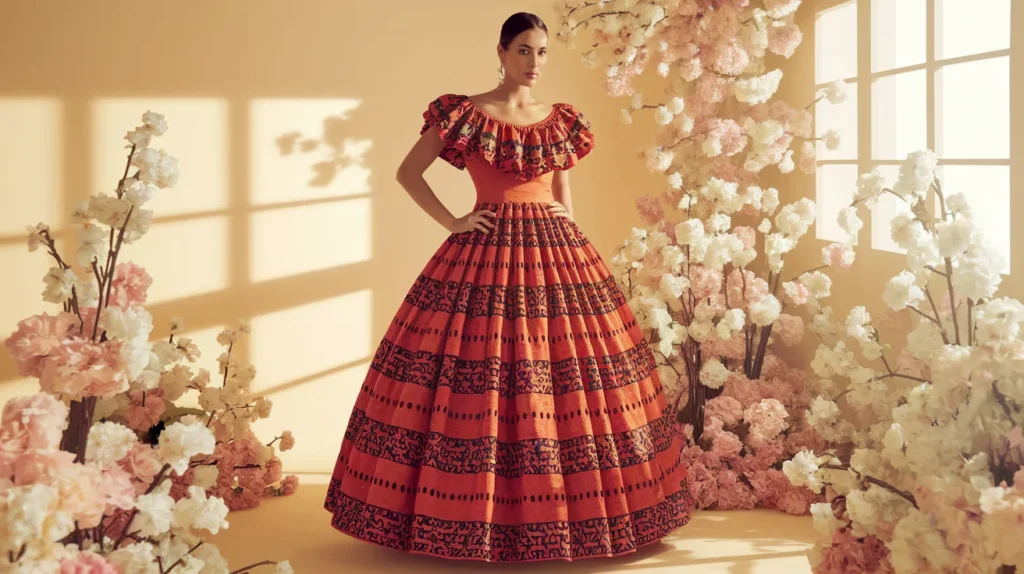
The Tehuana dress, famously worn by Frida Kahlo, featured vibrant colors, floral embroidery, and full skirts. It symbolized Mexican heritage, resilience, and artistic expression.
Where to Use
- Cultural festivals
- Mexican-themed events
- Art exhibitions
Where Not to Use
- Formal Western events
- Business meetings
Pros and Cons of Frida Kahlo’s Tehuana Dress
Pros:
- Rich in cultural significance
- Beautiful and expressive
Cons:
- Not suitable for all formal settings
- Heavy fabric can be warm
Elvis Presley’s Rock ‘n’ Roll Jumpsuit

Elvis Presley’s jumpsuit was a signature of rock ‘n’ roll energy and bold fashion. Decorated with rhinestones, flared pants, and wide collars, it remains an iconic symbol of entertainment and charisma.
Where to Use
- Music-themed parties
- Concerts and performances
- Retro events
Where Not to Use
- Formal black-tie events
- Everyday wear
Pros and Cons of Elvis Presley’s Rock ‘n’ Roll Jumpsuit
Pros:
- High-energy and fun outfit
- Eye-catching and bold
Cons:
- Not subtle or versatile
- May feel overly flashy
Conclusion:
Fashion has always been more than just clothing; it is a powerful means of self-expression, cultural identity, and social status. Throughout history, influential figures have used their iconic outfits to make a bold fashion statement, shaping trends that continue to inspire today’s wardrobes. Whether it’s Marie Antoinette’s Rococo gown, Napoleon’s military uniform, or Elvis Presley’s rock ‘n’ roll jumpsuit, each outfit tells a unique story of power, rebellion, elegance, or creativity.
Dressing like a historical figure isn’t just about recreating a look, it’s about embracing an era’s aesthetics, values, and symbolism. These outfits directly link to the past, allowing us to understand how fashion influenced society and individual expression. Whether attending a themed party, a historical reenactment, or simply looking for inspiration, these outfits can help you stand out and turn heads while making a statement of your own.
One of the biggest advantages of dressing in historically inspired attire is its versatility. Some styles, like Audrey Hepburn’s Little Black Dress, can be worn in modern settings, while others, such as Joan of Arc’s armor, are more suited for specific events. The key is to balance authenticity with practicality, ensuring that your outfit reflects both historical accuracy and personal comfort.
Fashion is cyclical, and many of these historical styles have been adapted into modern trends. Designers continue to draw inspiration from the past, proving that timeless fashion never truly fades. By embracing historical outfits, you’re not just wearing clothes, you’re telling a story, celebrating culture, and making an unforgettable impression. So, the next time you step out, consider drawing inspiration from fashion icons of the past, and let history guide your style choices.
FAQs
Why should I consider wearing historically inspired outfits?
Historically inspired outfits allow you to express individuality, creativity, and appreciation for the past. They are perfect for themed parties, cultural events, and costume competitions, helping you stand out while embracing the essence of a bygone era. Additionally, many historical styles have influenced modern fashion, making it easy to incorporate elements into your everyday wardrobe.
How do I choose the right historical outfit for an event?
The key is to match the outfit to the occasion and setting. If you’re attending a formal event, elegant looks like Marie Antoinette’s Rococo gown or Audrey Hepburn’s Little Black Dress work well. For themed parties or reenactments, costumes like Cleopatra’s Egyptian ensemble or Joan of Arc’s armor are more appropriate.
Are historical outfits comfortable to wear?
Comfort depends on the design, fabric, and accessories. Some historical outfits, like Coco Chanel’s Flapper Dress, are lightweight and easy to wear, while others, such as Queen Elizabeth I’s Tudor gown, can be heavy and restrictive. Choosing the right materials and adjusting for modern practicality can enhance comfort.
Can I mix historical fashion with modern trends?
Yes! Many historical fashion elements, like Victorian ruffles, military jackets, and flapper fringe, have been adapted into contemporary styles. You can incorporate vintage accessories, embroidery, or silhouettes into modern outfits to create a unique and stylish blend of past and present.
Where can I find historically inspired outfits?
You can find historically inspired outfits at costume shops, vintage boutiques, online retailers, or even make your own. Some designers specialize in period clothing, while others create modern adaptations of historical looks. Thrift stores and antique markets are also great places to find unique pieces that reflect historical fashion.